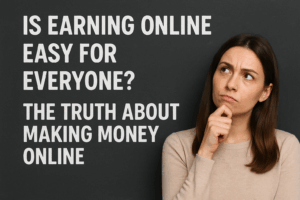What is an E-commerce Business Model?
Today, as businesses have evolved, e-commerce has actually changed the way they operate and relate with clients. An e-commerce business model is a plan of action that firms use to sell goods or services over the internet. This model outlines how companies can earn money from their operations, create value for customers and make them return and gain profits in the long run. Knowing different kinds of e-ecommerce business models is essential for entrepreneurs and businessmen who want to prosper in today’s competitive online market place. This article will focus on various varieties of e-commerce business models discuss their merits, challenges, and how they work.
The Kinds of Ecommerce Business Models
Ecommerce business models are divided into categories based on the respective nature of transactions and players involved. The key ones include: Business to Consumer (B2C), Business to Business (B2B), Consumer to Consumer (C2C), Consumer to Business (C2B), Business to Government (B2G) and Consumer to Government (C2G). Secondly we have operational and monetization strategies as classifications such as freemium models, subscription-based models etc.
B2C (Business to Consumer)
Maybe B2C is the most familiar kind of e-commerce. In this model, businesses directly sell their goods or services to individuals. The whole process of a customer visiting an online store, selecting products and buying them seems pretty straight forward. For instance B2C e-commerce has become very popular due to shopping at home, wide range of products, as well as competitive pricing.

Examples of companies practicing B2C ecommerce are Amazon which sells all kinds of stuff from electronics to groceries; Zappos known for shoes and clothes in general; and Netflix that streams movies directly to clients.
B2B (Business to Business)
B2B involves the sale between businesses. This is different from selling products or services directly to consumers. This implies that there are not many complications involved when it comes down to purchasing items through a website. On the other hand, larger order quantities and more time-consuming sales processes make these transactions different from B2C ones. Through increased efficiency and convenience, they make business procurement easy.
- Is Earning Online Easy for Everyone? The Truth About Making Money Online
- Free Virtual Assistant Job
- Free Captcha Typing Job
- Free Copy Paste Job
- Remote Jobs
- Free Translator Job
For example, Alibaba links manufacturers with wholesalers and retailers across the globe; IBM provides software and IT solutions for corporations while Salesforce offers customer relationship management CRM) service for enterprises on the cloud.
Consumer-to-Consumer (C2C)
C2C model of ecommerce assists in transactions between individual consumers. This model is commonly run on third-party platforms, which serve as brokers, through which a buyer and seller can be linked. Payments processing, dispute resolution or at times logistics are sometimes handled by C2C platforms.
They include eBay, where individuals can bid or sell directly to other consumers; Craigslist, a website for classified ads that fosters local selling and purchasing; and Etsy, a platform for handmade items, antique goods and unique objects.
Consumer-to-Business (C2B)
Under this C2B e-commerce model, individuals offer products or services to businesses. This model has become more common because of the rise of gig economy and freelancing. In C2B platforms, people can convert their skills into money when they provide their services to companies.
For instance Upwork connects freelancers with clients who need writing work done graphic designing programming among others; photographers sell stock images on Shutterstock while influencer marketing platforms enable influencers to collaborate with brands for promotion reasons.
Business to Government (B2G) and Consumer to Government (C2G)
E-commerce models B2G and C2G involve a transaction between businesses or consumers and government agencies. In case of B2G, business organization provides services and goods to government establishments including IT companies or defense contractors. On the other hand, in C2G, customers use online platforms like paying taxes or applying for licenses that are provided by the government.
For example, some e-commerce websites are also available as portals for B2G purposes where businesses can compete for public projects. This could be done through online tax filing services and websites where citizens can remit penalties or apply for legal documents.
Operational and Monetization Strategies
Aside from this fundamental classification of e-commerce models, there are various operational and monetization strategies that can help organizations distinguish themselves from others. Such tactics affect how goods or services reach the customer and how cash is generated.
Manufacturer Direct (D2C)
This model enables manufacturers to sell their products directly to end-users without going through traditional distribution channels. As such, it allows firms retain control over their brand name besides enabling them to have direct interactions with clients while at the same time having a possibility of acquiring higher profit margins.
Subscription-Based
To charge a recurring fee to its customers, business people use subscription-based model in accessing the goods and services. This model ensures that businesses receive constant income from their clients and that they interact with them continuously promoting loyalty.
Examples of such companies are streaming platforms like Netflix or Spotify which can offer entertainment paying monthly; Subscription-Box such as Birchbox delivers custom-made beauty products; and software delivery models like Adobe Creative Cloud, a SaaS service that offers software tools.
Freemium
The freemium is another business model where companies provide basic services at no cost while charging for premium features or advanced functionality. This approach helps acquire many users who pay for premium service out of the free one given to them.
Read Also: 11 Proven Ways to Make Money on Twitter
These examples include LinkedIn, which provides a professional networking platform at no cost but has some premium features you need to pay for; Dropbox-a cloud storage app offering a free version which can be upgraded for more space and options; Zoom- video conference software that allows unlimited and free meetings with payment options available for bigger gatherings and additional functionalities.
Dropshipping
This is a non-inventory retailing method where the business does not hold products. Instead, once a customer makes an order, the business buys it from another supplier and then sends it directly to him/her. By doing this, there will be no any costs involved in keeping inventory and also reduces risks.
Some of these dropshipping businesses include Oberlo which is a platform that allows entrepreneurs to find products to sell online and automate the entire process; many other ecommerce stores are using dropshipping so as to offer as many different products as they can without needing stock.
White Label
In the white label model, businesses sell generic products produced by a manufacturer under their own brand name. This approach allows businesses to quickly enter the market with their branded products without investing in manufacturing.
Retailers have used private-label food items sold in grocery stores; also cosmetics and skincare products that are branded by retailers. For instance electronics like smartphones and accessories offered by brands such as Tecno, Samsung, LG etc.
Wholesaling
Wholesaling involves selling large volumes of commodities to retailers who in turn sell them at single units to consumers. Wholesalers usually enjoy economies of scale thus offering goods at lower prices to retailers.
Other examples of wholesaling include B2B marketplaces like Alibaba, where manufacturers wholesale large quantities of products to retailers and distributors; and traditional wholesalers who act as intermediaries to brick-and-mortar stores.
Conclusion
For businesses struggling to get ahead in the online marketplace, understanding different ecommerce business models can be helpful. All these models have their specific advantages and disadvantages, and the choice of model depends on factors such as target market, product type, and overall business strategy. Ecommerce is still an ever-changing industry with B2C’s personal touch; B2B’s effectiveness; C2C’s marketplace character; subscription freemium dropshipping or other creative online marketing approaches. As a result e-commerce keeps unfolding itself bringing fresh ways for organizations to engage directly with customers thereby aiding them become flourishing participants in digital economy.








